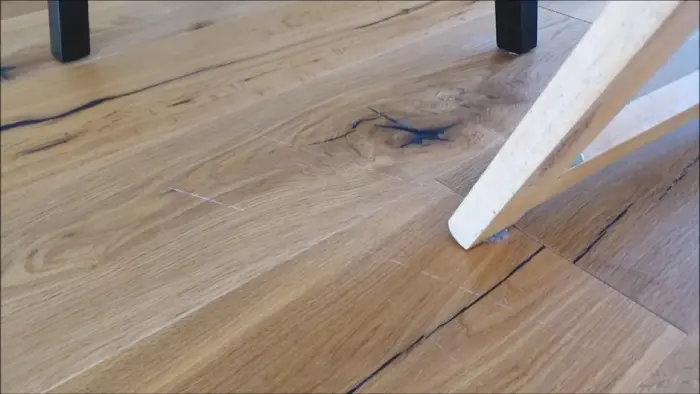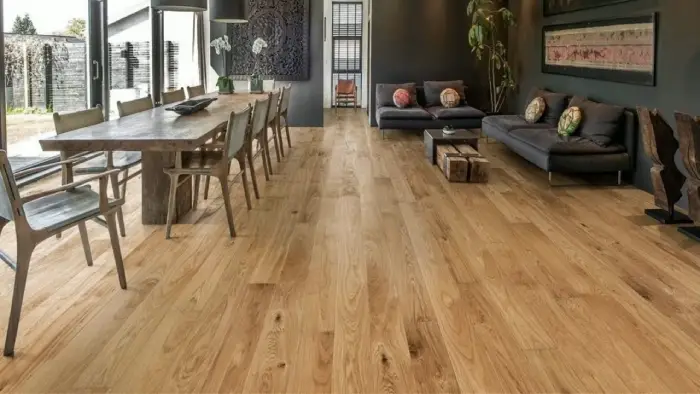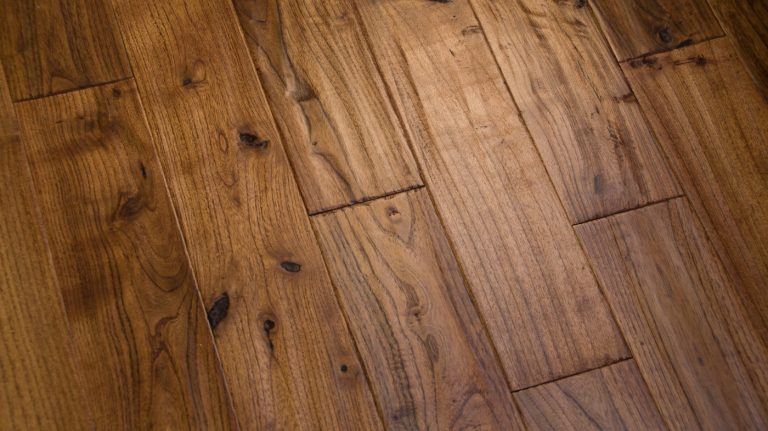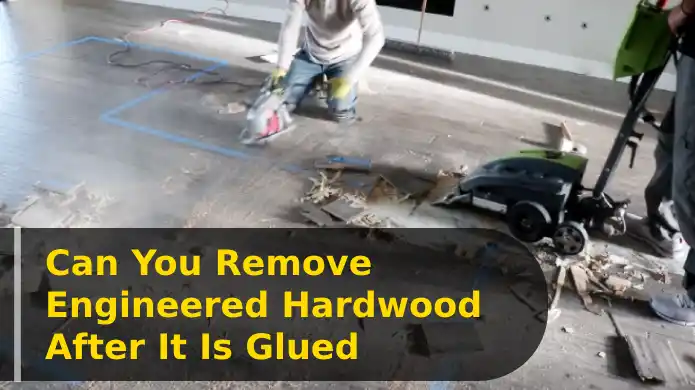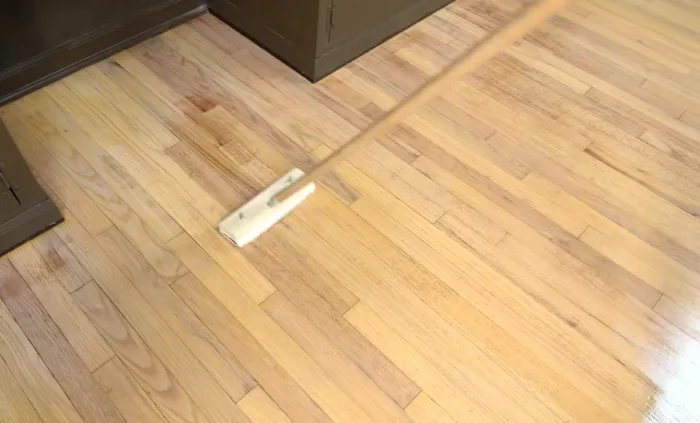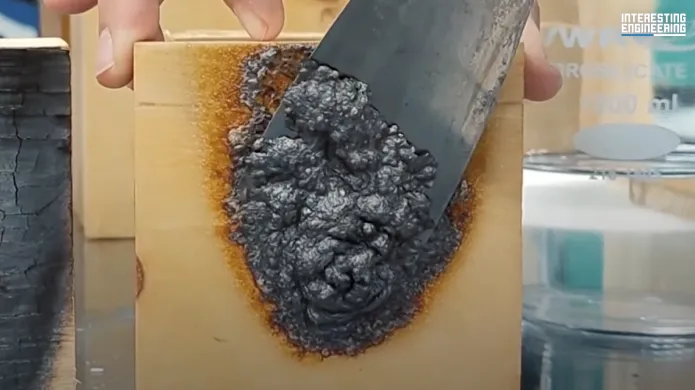How to Fix Scratches on Engineered Hardwood Floors: Three Methods Explained
Those who have engineered hardwood floors understand their beauty and durability. However, even the toughest floors can still get scratched over time. Scratches can be caused by pets, furniture, or just regular foot traffic. But it’s easy to fix scratches on engineered hardwood floors with the right tools and techniques.
To fix scratches on engineered hardwood floors, you can use three easy methods to fix them. You can buff light scratches with a soft cloth and a hardwood floor cleaner. Otherwise, you can use a concealer or touch-up kit to fill in deeper scratches or a wax repair kit to fill in scratches.
This article will share three easy methods for fixing scratches on engineered hardwood floors. Whether you have a small or a larger scratch, we will guide you through the steps to restore your floors to their original beauty.
How to Fix Scratches on Engineered Hardwood Floors: Three Easy Methods
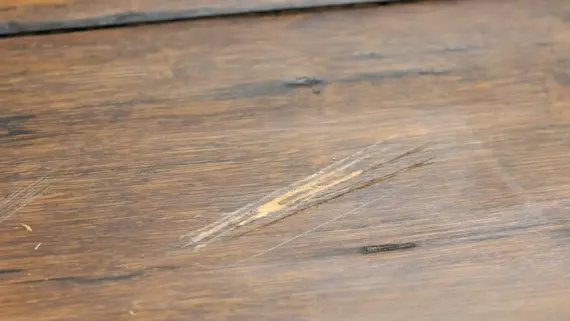
If you’re dealing with scratches on your engineered hardwood floors, here are three easy ways to fix them.
- Method 1: Buffing Light Scratches
- Method 2: Using Scratch Concealer or Touch-Up Repair Kits
- Method 3: Wax Repair Kit
But before you start:
- Prepare the area: Move furniture and rugs out of the way to create a clear workspace. This will help you access and repair the scratched areas more easily.
- Remove dust and debris: Sweep the floor to remove any loose dirt, dust, or debris. This ensures a clean surface for the repair process.
Method 1: Buffing Light Scratches
You can buff light scratches on engineered hardwood floors by using fine-grit sandpaper and gently rubbing in the direction of the wood grain. The method works best for scratches that aren’t too deep or wide, and it can help restore the appearance of your floors without needing more extensive repairs.
To ensure the best results, follow these steps after buffing the scratches:
- Wipe away debris: Use a washcloth to remove debris created during the buffing process. This will help ensure the surface is smooth and free of loose particles.
- Apply a sealant or finish: Use a suitable floor sealant or finish to the buffed area, following the product instructions. This will help protect the repaired area and maintain a consistent appearance across the floor. Be sure to allow the sealant or finish to dry completely before walking on the area.
Method 2: Using Scratch Concealer or Touch-Up Repair Kits
Revive the beauty of your worn-out flooring with scratch concealer or touch-up repair kits. These are easy-to-use solutions that will leave you in awe of the results. These products are designed for engineered hardwood floors and can effectively cover minor scratches and scuffs.
However, note that scratch concealers and touch-up repair kits are only suitable for small, surface-level scratches. If the damage is serious or extensive, you may need to consider sanding and refinishing your floors.
To use a scratch concealer or touch-up repair kit, clean the scratched area with a washcloth dampened with rubbing alcohol. This ensures the area is free from dirt, oils, and other residues that may affect the repair.
Next, apply the concealer to the scratched area using a soft cloth, following the product instructions for the best application technique. After applying the concealer, use a clean cloth to wipe away any excess product around the repaired area gently.
Finally, expose the repaired area to direct light as recommended by the product instructions to ensure proper curing.
Method 3: Wax Repair Kit
Unleash the artist in you with a wax repair kit that allows you to blend the scratches on your beloved wooden canvas easily. Start by cleaning the damaged area with rubbing alcohol to remove dirt or debris.
Next, prepare the wax mixture according to the instructions provided with the kit. Be sure to choose the correct color for your floor to achieve the best results. Using a plastic putty knife, carefully apply the wax mixture to the scratch, filling it evenly. Avoid applying excessive wax that could create an uneven surface.
Once the scratch is filled, take a clean white cotton cloth and gently wipe away the excess wax from the repaired area to achieve a smoother finish. If you have multiple scratches, repeat the process for each one until all scratches are repaired.
Consider staining the floors to help blend the repaired scratches with the rest of the floor, if desired. Choose a stain color that matches your engineered hardwood and apply it following the product instructions.
Do engineered wood floors scratch easily?

Engineered wood floors can scratch if you still need to install them, and the answer is yes, they can. Despite having a top layer of solid wood, engineered flooring is not impervious to damage. In fact, it’s just as susceptible to scratches and dents as solid hardwood floors.
It’s important to take preventative measures to protect your floors, such as using felt pads under furniture legs and keeping pets’ nails trimmed.
While engineered wood floors may scratch easily, there are ways to fix the damage. Depending on the severity of the scratch, you may be able to buff it out with a soft cloth and a bit of wood floor cleaner.
What to avoid when cleaning engineered hardwood?
To keep your engineered wood flooring looking its best, avoid certain cleaning methods that can cause irreversible damage.
For example, avoid soap-based cleaners, as they can erode the veneer surface on the top layer of hardwood. This erosion can cause scratches and dullness and ultimately ruin the appearance of your floors over time.
In addition to soap-based cleaners, you should avoid using steel wool, melamine sponges, or steam cleaners. All these can leave behind scratches and wear and tear that can’t be fixed.
What are common problems with engineered wood flooring?
One should be aware of several issues that can arise with engineered wood flooring, including moisture sensitivity, limited refinishing options, and the need for glue-down installation.
Moisture sensitivity is a common problem with engineered wood flooring, as it can cause warping, buckling, and cupping. Therefore, keeping the flooring dry and avoiding spills and leaks is important.
Also, limited refinishing options may concern some homeowners, as the top layer of engineered wood flooring is thinner than solid wood flooring, meaning that only a limited number of refinishing can be done.
To help you better understand the problems with engineered wood flooring, here is a table outlining the common issues and their causes:
| Problem | Cause | Solution |
| Moisture sensitivity | Exposure to moisture | Keep floors dry and avoid spills/leaks |
| Limited refinishing | Thinner top layer | Limit the number of refinishing |
| Glue-down installation | Need for secure installation | Hire professional or follow manufacturer instructions carefully |
What is the lifespan of engineered wood flooring?

With its durable composition of multiple core pieces topped off with a layer of beautiful hardwood, engineered flooring can withstand the test of time and last up to 30 years in optimal conditions. This lifespan is impressive compared to traditional hardwood floors, which may only last up to 20 years.
However, the lifespan of engineered wood flooring is dependent on several factors, including the quality of the flooring, the level of foot traffic, and the maintenance routine.
Here are four tips to ensure your engineered wood flooring lasts as long as possible.
- Clean your floors regularly with a soft-bristled broom or vacuum to remove dirt and debris that can scratch the surface.
- Use furniture pads to protect your floors from scratches and dents caused by moving furniture.
- Avoid exposing your floors to excessive moisture, which can cause warping and damage.
- Consider refinishing your floors every few years to restore their beauty and protect the hardwood layer.
Repair Scratches on Engineered Hardwood Floors to Extend Their Lifespan
Engineered hardwood floors are a popular choice for their style and durability. However, even with their robust construction, they can still acquire scratches, especially in high-traffic areas.
Following the tips and methods outlined above, you can easily repair scratches on your engineered hardwood floors and extend their lifespan. Remember to use caution when cleaning your floors and avoid using harsh chemicals from damaging the surface.
Proper care and maintenance will make your floors look beautiful for years.

